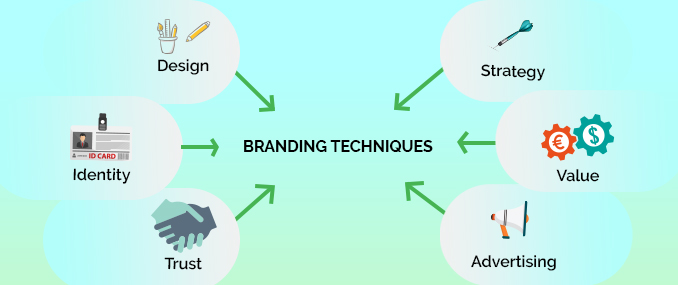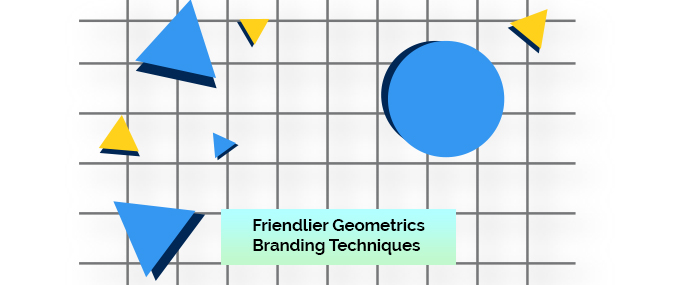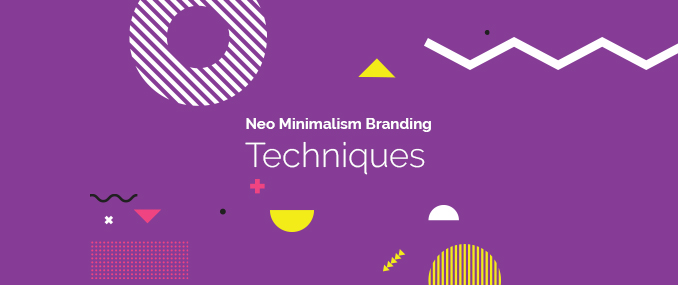Ahrefs Vs Semrush: Which Is The Better SEO Tool In 2025?
Apr 08, 2025

Apr 08, 2025

Mar 29, 2025

Mar 29, 2025

Mar 29, 2025

Mar 29, 2025

Mar 29, 2025

Mar 27, 2025

Mar 27, 2025
Sorry, but nothing matched your search "". Please try again with some different keywords.


Are you a traditional brand or a cutting-edge one? Also, you could be on the leading edge of new discoveries or bring back some of the good old days. The branding techniques of 2019 take two opposite and definite paths; nostalgic and futuristic.
Consumers use the above branding techniques to establish the side on which your company falls. It does not mean that one side is more profitable or better than the other side. The way you present yourself depends on your target audience and what you have to offer.
In some instances, you can combine the two styles to get a unique brand identity. The point is, if you want to effectively apply branding techniques in 2019, you should understand what they are and their effects on you.
The basis for this article is the design trends for graphic design, typography, web design, product packaging, and logos. The information forms the basis for the top 10 branding techniques for 2019. These techniques will keep your company branding updated and new this year.

3-D imagery comes top on the list of the best branding techniques that businesses can use in 2019. Technology has a great impact on branding. When you unveil new and state-of-art visuals for your brand, people will continue to raise their standards and expect that the leading brands will meet that quality.
It is what we are seeing in 3D imagery branding techniques. Companies are using modern design software to include impressive and photo-realistic 3D imagery in their marketing. It blurs the line between computer-generated and real-life visuals.
The 3D branding technique uses an acute eye and jaw-dropping visuals for details in creating pictures whose primary goal is to give onlookers a ‘wow’ experience.
This trend also works perfectly for backgrounds, logos, and lettering. When you apply it to branding, you will display to the target audience how clever and cutting-edge your company is without saying even one single word.
![]()
Would you like to add something that is both retro and futuristic to the style of your brand? Pixel art is the best among all the branding techniques. It brings together the forward-thinking digital style art and the nostalgia for the 80’s video games.
8-bit art or pixel art uses large and monochrome squares that look like individual pixels and then organize them in recognizable shapes. It can be an Italian plumber having a bushy mustache or a simplistic flower.
You can create mascots or visuals that look as if you pulled them from the 80s arcade straight away. Alternatively, you can dial it down to get a post-modern and more abstract design. You can achieve this objective by using the pixels themselves instead of making them represent an image that is bigger.

This branding technique is the biggest in 2019 because it affects all people irrespective of the company identity. Because of the advances in technology, the number of marketers who are abandoning the outdated model or principle of ‘never change your logo’ is increasing.
It paves way for shape-shifting or optimization of logos. All people want to stay at the top of graphic design trends.
The idea behind this is that companies should have various versions of logos in the stable. Therefore, the brand can optimize its choice for every application. You need a small and simple logo version for the mobile app.
A black and white logo version can save you a lot of money when you are printing t-shits in masses. Besides, a cartoony and colorful will be more appealing when running a campaign for children. There are three areas for logo adaptability that you need to keep in mind while working on this branding technique.
The first thing is to make sure that it has a responsive design. The logo should change in digital platforms to accommodate the screen size. The user should view it whether he is using the Smartphone, tablet, or desktop.
The second tip about the logo is that it should be contextual. The logo should change depending on where it is being used. For instance, you can emboss a one-tone logo on the business card and fit a custom logo on the baseball cap among others.
The third attribute is to have a variable logo. Some sections of your logo can change to fit the marketing campaigns. Use various imagery to promote different products and services or appeal to different groups.
The underlying principle is that you can change your business logo depending on your current needs. With the help of a logo generator, you can design a variety of styles for your new image. It is one of the best branding techniques to apply to the business. However, don’t go overboard because approximately four versions of the logo can serve you adequately.
Not all the branding techniques are reflective of the state of society or rooted in technology. Some of the branding techniques reflect what individuals like at that particular moment. Lately, this seems to be the case when it comes to how brands use negative space in their logos.
More and more brands are proactively incorporating negative space in the best way possible. Negative space refers to the use of empty space as part of your visuals to communicate a clever message of hidden meaning.
Modern-day designers have been taking the negative space to the next level by using it to create memorable and creative designs. The design is good at adding hidden levels and duality to the branding strategy.
It allows you to use two and not one strategy for your branding. Once you turn the negative space into an image, your textual logo will become more visually dynamic and won’t have a boring appearance.

Minimalism continues to dominate digital design because of its practical benefits and aesthetics. Minimalistic has a better look on small screens and loads faster. However, we are currently realizing some backlash to minimalism together with the modern serif trend.
Serifs refer to the little tags that are at the end of the letter strokes. In the past, serifs were a big no to the minimalistic branding techniques. However, serifs are coming back powerfully in 2019 because the old-fashioned styles are coming back to the market.
The good thing with serifs is that they have a unique ability to communicate the personality of the brand. In 2019, we expect to see custom-made, unique, and eye-catching serifs in branding techniques. This series will have a lot of characters that will take the style of the brand to the next level.
The series for this year are individualized and strong which gives the branding technique a classic and simultaneously modern feel.
You can get the most from serifs by applying them sparingly. Serifs work partially well on headings, logos, and titles. This branding technique is not the best choice for large blocks of text.
Serifs can give you a more distinguished slogan and brand name. However, serifs can also make your site copy or blog article look distracting and busy.
While it seems as if typographic trends are following their own set of rules, the use of ghost letters branding techniques has been on the rise. The technique entails letter outlines with transparent insides that allow you to see through them at the image background.
Its origin is the ghost button that was so popular in the early to mid-2010. Translucent buttons fit the hero images because they obscure less of it. The next branding trend was the big and bold typography in the past few years, and it is a subgenus of the renowned minimalistic movement.
When you combine all the above branding techniques, you will get ghost letters-bulky and big typography that is more subtle and doesn’t take attention from the background images. The style benefits from bold outlines and large lettering that do not impede readability.
However, like other flashy fonts, only use them in headings and titles. With ghost letters, you can be sure that you have some of the best branding techniques for your business.

Friendly geometrics is among the friendliest futuristic branding techniques. The geometric branding technique involves straight lines, grids, and abstract modern shapes. The style is appealing to the desire that people have for order, structure, and current fascination together with cutting-edge modernism.
However, geometry alone comes with the draw-back of cutting-edge modernism. These mathematical designs come across as intimidating, cold, and sometimes oppressive. The solution is the evolution of geometry as one of the branding techniques.
To counteract some of the above drawbacks, designers are using several techniques to make geometrics more approachable and friendly in 2019. The first thing that you can do is to combine them with warm and bright colors.
The cheerfulness of these colors over-power the inherent gloominess of the style. The second thing that you can do is to add more curves because they are more playful and inviting than sharp corners and straight lines.
In this way, your brand will benefit from modern and clean lines while retaining a positive and approachable vibe at the same time. Thus, friendlier geometrics is among the most effective branding techniques in the market.

Even though we have several branding techniques that conflict with the minimalistic design, this design is still alive and popular in the design world. In 2019, this design is evolving to reach out to new and unchartered territory.
Neo-minimalism is a sub-category of minimalism and is popular in this new era. Neo-minimalism is an exaggeration or extension of the properties of minimalism in several ways. It uses more negative space and has fewer details. It combines all these attributes with bold typography and flashy colors.

In 2019, you can go back to more traditional branding techniques. There is an increase in vintage branding, especially through packaging and logo design.
Even though these branding techniques fall under the category of ‘you will know then once you see them,’ certain basic guidelines can assist you to replicate them.
Logos that are vintage-inspired center around one main image. In most cases, it is a hand-drawn illustration that is encased in an emblem-frame that has the name of the company in a hand-lettered font and in some cases its slogan if there is enough room.
In most cases, vintage logos have an ‘established year” even if it is the last or current year. The logos also come with a textured effect which makes the logo weathered and amplifies the authenticity sense.
Vintage packaging follows several similar stylistic choices even though it has a more open-ended design because most logos have a fixed format. The use of muted and natural color formats will tell you that you are dealing with vintage packaging.
It has an overall hand-made appearance and old-fashion typography. In most cases, you will write the company name as an upward slant or wave.
Remember you can control how little or how much of the vintage appearance you need to use in branding. If your intention is not to go ‘full retro,’ you can choose and pick the elements to use. One best example is adding a weathered texture or an established date to a modern logo.
Read more: 11 Places To Look For Website Design Inspiration
Serifs are not the only technique that is fighting against minimalist branding techniques. Embracing intricate decorative details is gaining a lot of popularity in the modern business environment. It involves giving your brand more personality by adding more flourishes and embellishments.
It draws its inspiration from art deco and baroque design styles. It also gets inspiration for the modern-day popularity of hand-drawn illustrations. The technique is typified by similar ornamental details that minimalists strive to strip away.
Some of the telltale attributes include visual flourishes for filling negative space, parallel and concentric lines, and subtle details like individual feathers, wrinkles, and eyelashes among others. The branding technique also has repeated patterns of interlocking and ornate shapes.
Even though this trend produces some of the most artistic and beautiful imagery for any brand, you should not forget about the shape-lifting technique. It will make sure that you have a pared-down version.
Times, details visuals will boost you a lot. However, you will always need s simpler thing in some areas. Intricate details are among the branding techniques that you should not leave behind in 2019.
FAQ:
1. What is Every Single Brand’s Primary Requirement?
To make your brand popular and famous, you have first to know your brand’s primary needs. Then, and according to your business goal and the immediate needs of your brand, you have to design your promotional campaigns.
Here are the few factors which are the basic needs of every individual brand.
For analyzing these factors, you have first to examine why the people are going to prepare your business? Based on your needs, you have to redesign your business structure.
2. Do You Know What 5 Branding Strategies Are?
Every online advertiser and business handler is always following the five strategic rules for branding.2021 is the year of the new business concept and the new strategies.
Here are the names of five branding strategies for your business and improving your branding techniques.
Branding techniques have a critical role to play in any brand. It is the only thing that will separate your brand from the competition. If your branding techniques well, they will make your brand stand out in the market.
In the digital age, businesses, personal brands, influencers, and online courses leverage branding to differentiate themselves. For instance, the branding and content quality of “Thomas’s Online Dog Training School” make it a top pick for dog owners.
The main branding element for most companies is the logo. The kind of colors and design that you choose depends on the nature of your business. If you need guidance on how to choose the best branding techniques for your company, don’t hesitate to reach us at info@viacon.in.
Read Also:
Mashum Mollah is the feature writer of SEM and an SEO Analyst at iDream Agency. Over the last 3 years, He has successfully developed and implemented online marketing, SEO, and conversion campaigns for 50+ businesses of all sizes. He is the co-founder of SMM.
View all Posts
Ahrefs Vs Semrush: Which Is The Better SEO To...
Apr 08, 2025
How Data-Driven Hiring Reduces Costs and Impr...
Mar 29, 2025
Why Headless CMS Works Well for EdTech Startu...
Mar 29, 2025
Building Topical Authority to Excel in Search...
Mar 29, 2025
The Impact of Professional Recruitment Servic...
Mar 29, 2025

